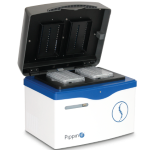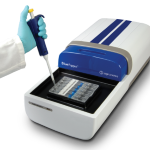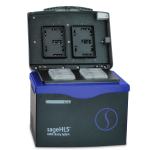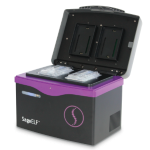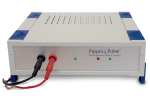 Hamid Ashrafi is working to breed higher-quality blueberries that are amenable to mechanical harvest, larger in size, tastier, and have a longer shelf life. As an assistant professor at North Carolina State University, Ashrafi is bringing genomic tools to a long-running blueberry breeding program at the school, integrating the classical breeding with modern breeding.
Hamid Ashrafi is working to breed higher-quality blueberries that are amenable to mechanical harvest, larger in size, tastier, and have a longer shelf life. As an assistant professor at North Carolina State University, Ashrafi is bringing genomic tools to a long-running blueberry breeding program at the school, integrating the classical breeding with modern breeding.
Blueberries present a real challenge for genome sequencing and assembly: they naturally occur in diploid, tetraploid, and even hexaploid genomes. A draft genome assembly exists, though it isn’t publicly available, and Ashrafi and his colleagues at Kannapolis campus are trying to improve it with new sequencing tools like PacBio, 10x Genomics, Dovetail Genomics, and BioNano Genomics. He is also studying the plant’s transcriptome, which has not been covered extensively before.
Ashrafi relies on core facilities to perform the sequencing, but prefers to handle sample prep in his own lab to reduce the sample preparation turnaround time as well as to train students and postdocs. For size selection, he chose the BluePippin and SageELF automated platforms from Sage Science because they could handle the large fragments needed for long-read sequencing libraries. Recently, he has been using the new 30 Kb protocol for PacBio libraries and has been pooling fractions for Iso-Seq analysis with the SageELF.
The SageELF, which separates an entire sample by size into 12 contiguous fractions, is a good fit for genome and transcriptome sequencing with PacBio. “It reduces the amount of work that you do,” Ashrafi says. “When you make one library, you can fractionate all of it. You can define which fractions you want and combine them, and you only have to run it one time.”
For example, he might split fractions into groups of 10-20 Kb, 20-30 Kb, and 30+ Kb for genome sequencing so the downstream data represents the whole blueberry tissue sample. For Iso-Seq analysis of gene expression, Ashrafi likes to combine fractions into a few bins, which helps boost library yield for deeper sequencing coverage. “Instead of running Iso-Seq for each of the fractions,” Ashrafi says, “you can combine fractions and have enough DNA to run more SMRT Cells.”
Now that he’s become an expert in size selection for long-read sequencing, Ashrafi says his next step is to begin deploying BluePippin for short-read libraries as well.
